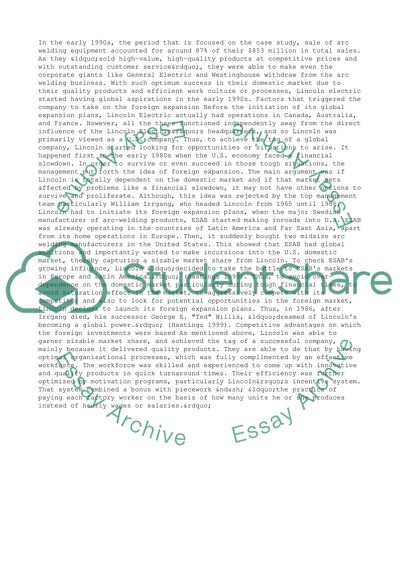Cite this document
(Harsh Lessons from International Expansion Case Study, n.d.)
Harsh Lessons from International Expansion Case Study. Retrieved from https://studentshare.org/management/1434208-lincoln-electric-business-case-harvard
Harsh Lessons from International Expansion Case Study. Retrieved from https://studentshare.org/management/1434208-lincoln-electric-business-case-harvard
(Harsh Lessons from International Expansion Case Study)
Harsh Lessons from International Expansion Case Study. https://studentshare.org/management/1434208-lincoln-electric-business-case-harvard.
Harsh Lessons from International Expansion Case Study. https://studentshare.org/management/1434208-lincoln-electric-business-case-harvard.
“Harsh Lessons from International Expansion Case Study”, n.d. https://studentshare.org/management/1434208-lincoln-electric-business-case-harvard.


